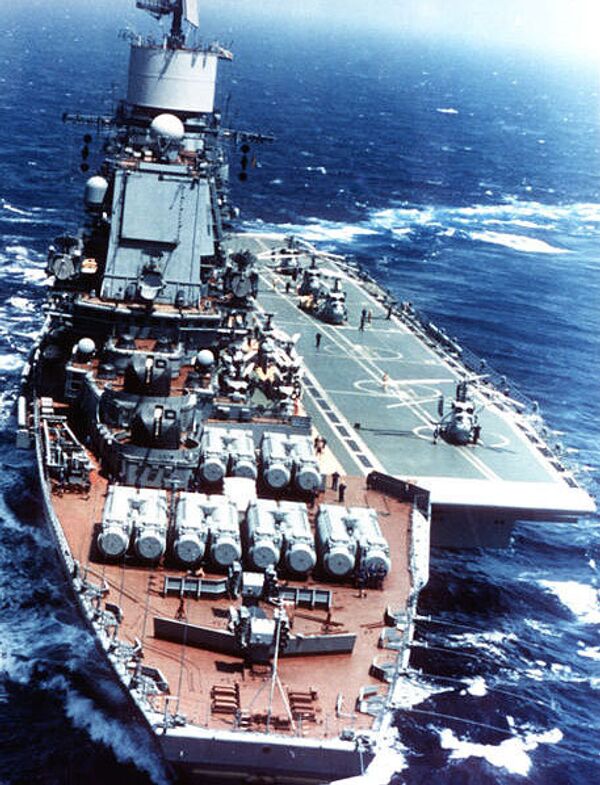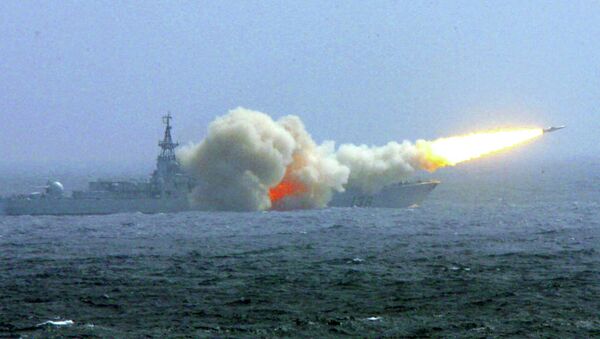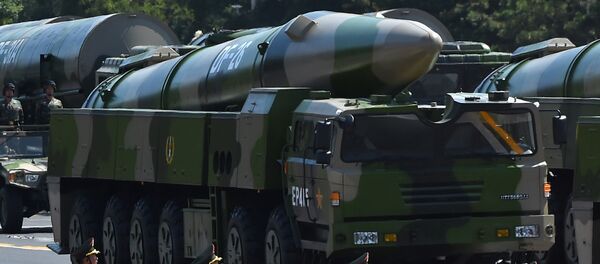"We know that China has the most advanced ballistic missile force in the world," James Fanell, a retired US Navy captain and former senior intelligence officer with the US Pacific Fleet, told Reuters Thursday. "They have the capacity to overwhelm the defensive systems we are pursuing."
Robert Haddick, a former US Marine Corps officer and visiting senior fellow at the Mitchell Institute for Aerospace Studies, who is also an adviser to the US Special Operations Command, told Reuters Thursday that "China's anti-ship missile capability exceeds those of the United States in terms of range, speed and sensor performance."
Since long before the 1949 revolution that swept the Communist Party to power in the new People's Republic of China, the US had ignored Beijing's military capabilities, and paid little more attention since then. However, Beijing has spent decades building up an effective deterrent of cheap, long-range missiles aiming not for parity with the Pentagon, but deterrence of its most dangerous assets: the dozen super carriers Washington uses to terrorize countries that stand against it.
The US Navy hasn't seen its nautical supremacy contested since World War II, when it waged an all-out war across the Pacific against the Imperial Japanese Navy. Like China today, the Soviet Union aimed to keep US carriers and submarines away from its coastlines and littoral areas with huge naval missile platforms, even building aircraft carriers with missile launchers on them, like the Kiev-class "heavy aviation cruisers."

China takes missiles so seriously that in 2015, Chinese President Xi Jinping elevated the People's Liberation Army Rocket Force (PLARF) to the status of full service branch, alongside the army, navy and air force.
While Beijing has never made public the size of its missile arsenal, the Communist Youth League has posted some figures about the PLARF, showing it's roughly 100,000-men strong and has 200 intercontinental ballistic missiles and 300 medium-range ballistic missiles. It also has 1,150 short-range ballistic missiles and 3,000 cruise missiles, according to the group, which is the youth wing of the Communist Party.
PLARF's weapons have the advantages of both speed and range over US counterparts. For example, while the US has no operational supersonic or long-range anti-ship missiles, China has two: the YJ-12, with a range of 400 kilometers, and the YJ-18, with a 540-kilometer range.
Not yet, and if they ever do they'll be obsolete, and the ship has no defense from anti-ship mississles like the YJ-12 that China deploy. pic.twitter.com/xzUVtQJOPK
— Steve Reynolds (@Yesfanboy) February 17, 2019
The best US anti-ship missile, the subsonic RGM-UGH-84 Harpoon, was recently modified to extend its range to 240 kilometers. Raytheon has been trying to upgrade its 1,600-kilometer range Tomahawk cruise missile to be able to strike ships, but the weapon is far from ready to be fielded against the PLAN.
"That is a very big gap," Haddick noted.
Hypersonic technology is another area where China leads the US: since 2014, Beijing has been testing weapons that fly up to five times the speed of sound, using a kind of jet engine called a ramjet or scramjet, specially designed for the incredible speeds.
A harpoon missile casually displayed at the shopping center pic.twitter.com/004yl3MQUG
— Nadir Firat (@Nadir_Firat) November 7, 2017
"Frankly, we were the leaders in that 10 and 15 years ago, and we just let it drop," Michael Griffin, US Undersecretary of Defense for Research and Engineering, told lawmakers in April 2018 about hypersonic weapons development. "We need to get started again."
"We do not have defenses against those systems," he warned.
The US tested a hypersonic cruise missile in 2017, but contracts given to Lockheed Martin and Raytheon to develop the weapons are recent and haven't yielded results.
"We are at a disadvantage with regard to China today in the sense that China has ground-based ballistic missiles that threaten our basing in the Western Pacific and our ships," Admiral Harry Harris, former head of US Pacific Command, told the US Senate Armed Services Committee in March 2018.
Beijing has made no bones about the purpose of its missiles, either.
While a former PLA colonel conceded to Reuters that "US missiles are superior to ours in terms of quality and quantity," Beijing still has the advantage in terms of cost: it can produce vastly more missiles than US air defenses could hope to shoot down, and a carrier might cost 10,000 times what a missile does.
"We cannot defeat the United States at sea," the retired PLA colonel told Reuters. "But we have missiles that specifically target aircraft carriers to stop them from approaching our territorial waters if there were conflict."
One animation at the Zhuhai Air Show last November showed a swarm of missiles hitting enemy warships, including aircraft carriers; at the same demonstration, the PLARF unveiled the the supersonic CM-401 ballistic anti-ship missile, which has a 290-kilometer range.






